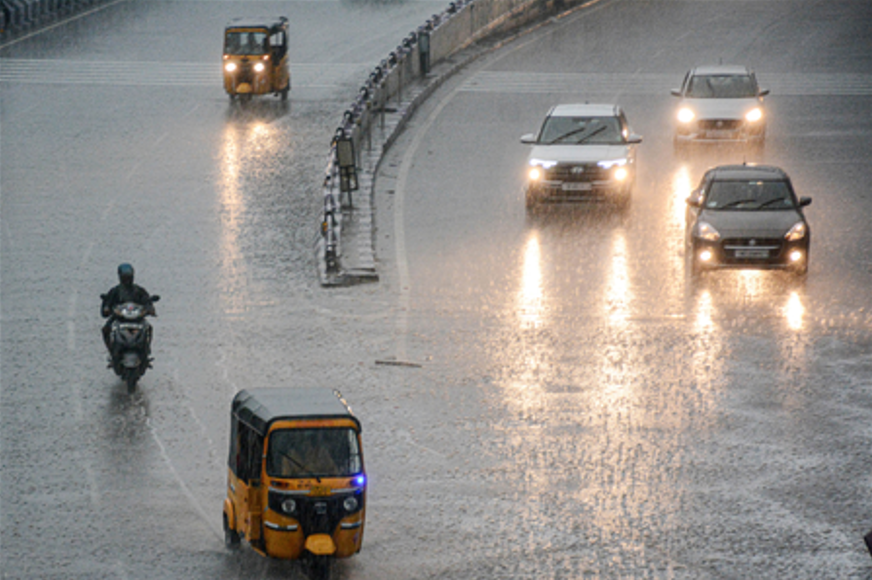Heavy rainfall continued to lash Gujarat over the past 24 hours, with showers reported in 212 talukas across 33 districts.
Valsad’s Pardi taluka recorded the highest rainfall at four inches, followed by Dharampur with three inches, while Khervagam (Navsari), Kaprada (Valsad) and Talod (Sabarkantha) received more than two inches, according to the State Emergency Operation Centre (SEOC).
The India Meteorological Department (IMD) has issued a warning to fishermen, advising them not to venture into the sea along Gujarat’s coastal belt from August 22 to 25 due to rough weather conditions.
As of now, the state has received an average of 681.14 mm of rainfall, accounting for 77.24% of the season’s quota.
South Gujarat leads with 80.51% of seasonal rainfall, followed by Kutch (80.26%), Saurashtra (77.39%), North Gujarat (75.87%), and East-Central Gujarat (73.40%).
Water levels in reservoirs have surged, with the Narmada Dam, considered Gujarat’s lifeline, now at 80.84% capacity.
Across the state, 206 other reservoirs are filled to 75.74% of their capacity. Authorities have placed 73 dams on high alert, 35 on alert, and 16 under warning. The monsoon has also triggered large-scale evacuations.
Since June 1, 2025, nearly 5,205 people have been shifted to safer locations, while 900 citizens have been rescued.
To deal with emergencies, 12 National Disaster Response Force (NDRF) teams and 20 State Disaster Response Force (SDRF) teams have been deployed across the state. One NDRF and 13 SDRF teams are kept on standby at headquarters.
Gujarat’s 2025 monsoon has been marked by extremes — early surge, patchy distribution, and sudden cloudbursts.
June turned out to be the wettest in a decade, with around 288.70 mm of rainfall, or nearly 33% of the annual average, falling in just one month.
By late June, the state had already received over 34% of its seasonal quota, a record pace compared to previous years.
The rain, however, was uneven. South Gujarat and Kutch received rainfall above 80% of their average, while Saurashtra struggled with long dry spells and deficits, with some talukas recording as little as 23–36% of normal rain.
(IANS)














